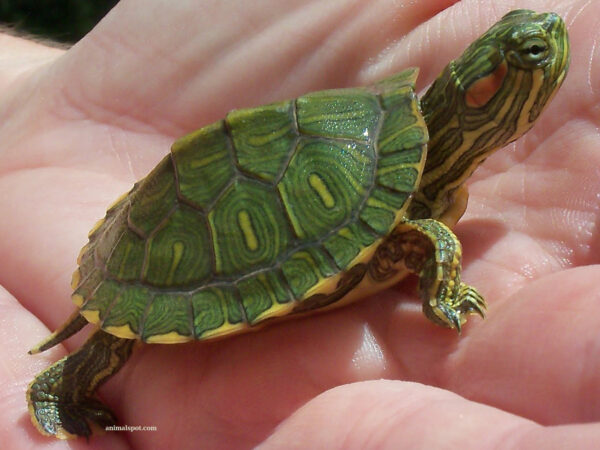
The Red-eared Slider is a hardy freshwater turtle that is popular as an aquarium pet in the United States. It gets its name from the broad red stripes present behind each eye. Its popularity in the pet trade has helped account for its numerous introductions worldwide, and it is now designated as one of the “100 World’s Worst Invaders” by the Global Invasive Species Database.



